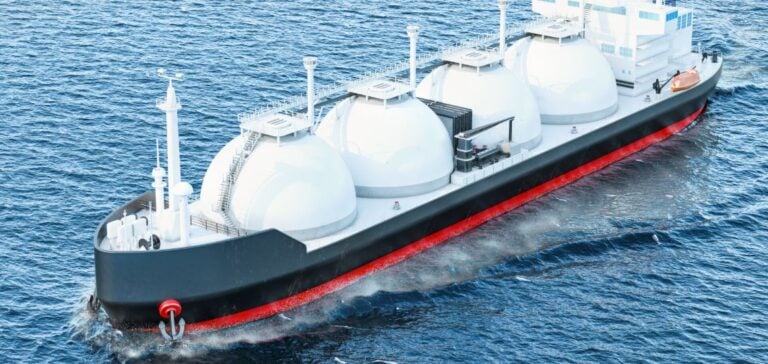U.S. liquefied natural gas (LNG) shipments saw a strategic reorientation in November, with a majority of cargoes destined for Europe. Out of a total of 110 shipments, 62 were delivered to Europe and Turkey, accounting for 56% of U.S. exports for the month, according to an analysis by S&P Global Commodity Insights.
Concentration of Deliveries to France and the Netherlands
France and the Netherlands each received 11 shipments, representing the largest shares. These two countries, with their robust regasification capabilities and interconnection infrastructures, play a key role in redistributing LNG to other markets or for domestic use.
These deliveries surpassed those directed to other major importers such as India, Turkey, and the United Kingdom, which each received eight shipments. Notably, Turkey received its first U.S. LNG shipments since May, marking a return after several months of absence.
Factors Driving the Shift in Flows
Several factors explain this increase in shipments to Europe:
– Winter Conditions: Early cold weather led to a decline in storage levels, from 95% to 85% over November.
– Competitive Pricing: Despite moderate demand in Asia, low transport costs and flexibility of U.S. cargoes made these deliveries economically advantageous for Europe.
– Geopolitical Context: Persistent tensions between Russia and Ukraine are increasing Europe’s reliance on energy alternatives such as U.S. LNG.
Impact on European Markets
Spot LNG prices in Europe have reached new highs, supported by increased demand and declining storage levels. On November 21, the price for cargoes delivered to Northwest Europe was assessed at $14.80/MMBtu, an annual record according to Platts.
This situation also reflects delays in the commissioning of new liquefaction capacity in the United States, including the Plaquemines LNG project in Louisiana and the Corpus Christi expansion in Texas. While these projects aim to increase supply in the short term, their effective startup remains uncertain.
Global Balance and Prospects
Despite limited arbitrage opportunities with Asia, U.S. LNG continues to play a central role in stabilizing global energy supplies. In November, shipments to the Asia-Pacific region decreased to 29, down from 45 in October, as European demand remained strong.
With the anticipated end of Russian-Ukrainian gas transit in 2025, European buyers are seeking to strengthen their energy security. In this context, U.S. LNG is expected to maintain a strategic position, provided investments in liquefaction and transport infrastructure are sustained.






















